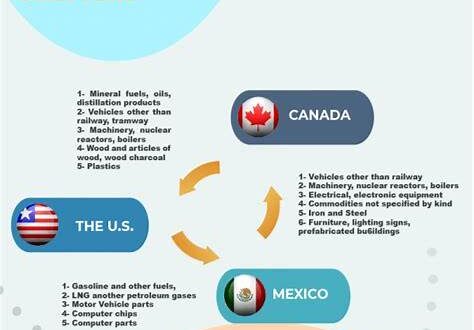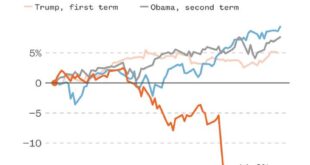In response to the United States’ implementation of comprehensive tariffs on imports, Canada, Mexico, and China may consider collaborative strategies to mitigate economic impacts and reduce reliance on U.S. trade.
This analysis explores potential measures these nations could adopt and examines the development of economic corridors aimed at circumventing U.S. economic influence.
1. Strategic Measures to Counter U.S. Tariffs
A. Diversification of Trade Partnerships:
Bilateral and Multilateral Agreements: Canada, Mexico, and China could pursue enhanced trade agreements among themselves and with other nations to broaden their export markets, thereby decreasing dependence on U.S. trade.
B. Engagement with Emerging Markets:
By strengthening economic ties with emerging economies in Asia, Africa, and Latin America, these countries can open new avenues for trade .
2. Resource Allocation and Supply Chain Realignment:
A. Regional Supply Chains:
Developing supply chains within North America and Asia can reduce reliance on U.S. inputs and markets, fostering regional economic resilience.
Investment in Domestic Industries: Prioritizing investment in key domestic sectors can enhance self-sufficiency and competitiveness in the global market.
3.Imposition of Counter-Tariffs:
A.Targeted Tariffs:
Implementing retaliatory tariffs on specific U.S. goods can exert economic pressure and serve as a negotiating tool. For instance, Canada has announced 25% tariffs on certain U.S. vehicles in response to U.S. tariffs.
4.Political Development of Economic Corridors to Isolate U.S. Influence
To facilitate trade and reduce dependence on U.S. routes, Canada, Mexico, and China could collaborate on establishing alternative economic corridors:
A.Interoceanic Corridor of the Isthmus of Tehuantepec
Located in southern Mexico, this corridor connects the Pacific and Atlantic Oceans via a railway system, providing an alternative to the Panama Canal.
5.Strategic Importance:
Enhancing this corridor can boost trade between Asia and the Americas, offering China and Mexico a strategic route that bypasses U.S. territory.
6.Trans-Pacific Trade Routes:
A.Direct Shipping Lines:
Establishing direct maritime routes between Chinese ports and Canadian Pacific ports, such as Vancouver, can facilitate smoother trade flows, minimizing reliance on U.S. ports.
B. Infrastructure Investment:
Investing in port infrastructure and logistics in Canada can accommodate increased trade volumes from Asia.
7.North American Rail Network Enhancement:
A.Canada-Mexico Rail Link:
Developing a robust rail network connecting Canadian and Mexican industrial hubs can enable the efficient movement of goods without transiting through the U.S., fostering direct trade between the two countries.
In light of U.S. tariff policies, Canada, Mexico, and China have several strategic options to mitigate economic impacts, including diversifying trade partnerships, realigning supply chains, and developing alternative economic corridors.
Collaborative efforts in establishing and enhancing these corridors can facilitate more autonomous and resilient trade networks, reducing dependence on U.S. routes and markets.
 Top Trends Blogs
Top Trends Blogs




